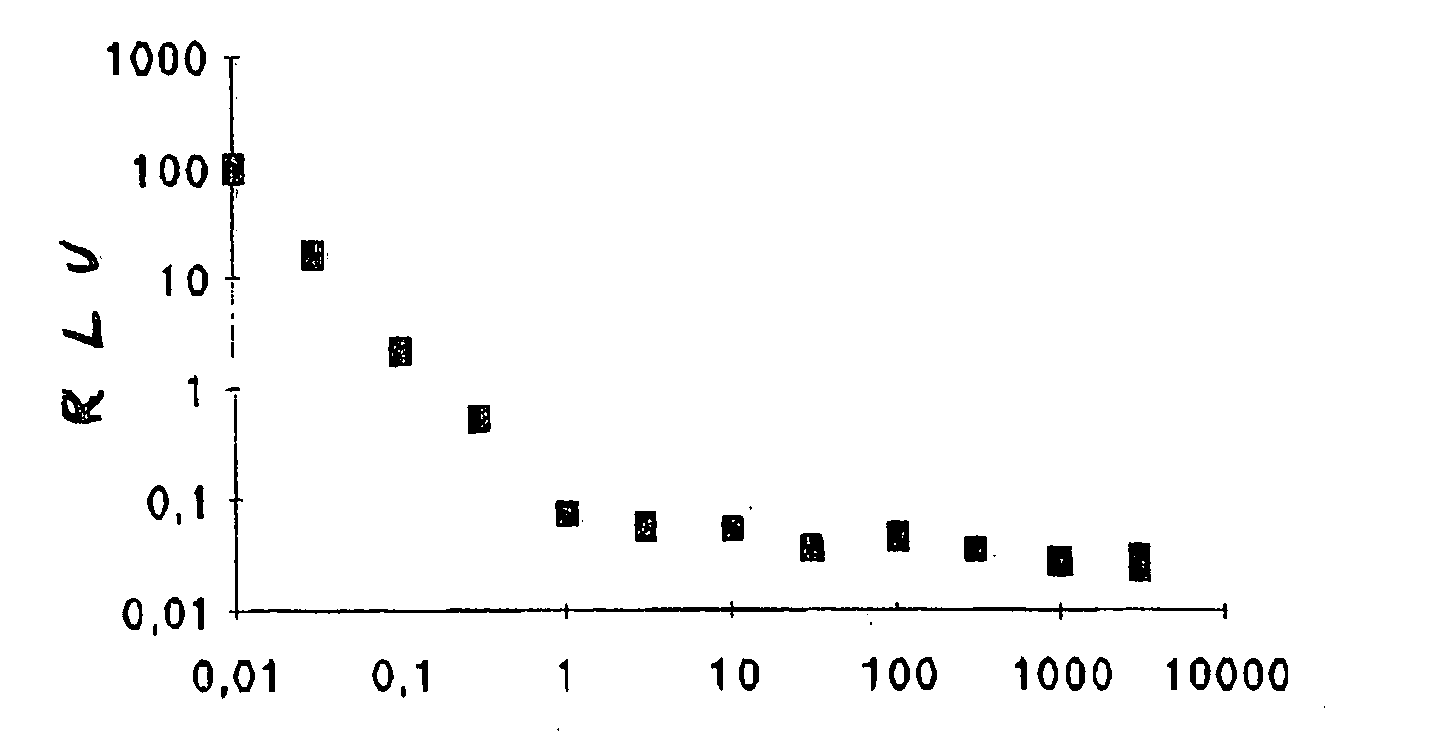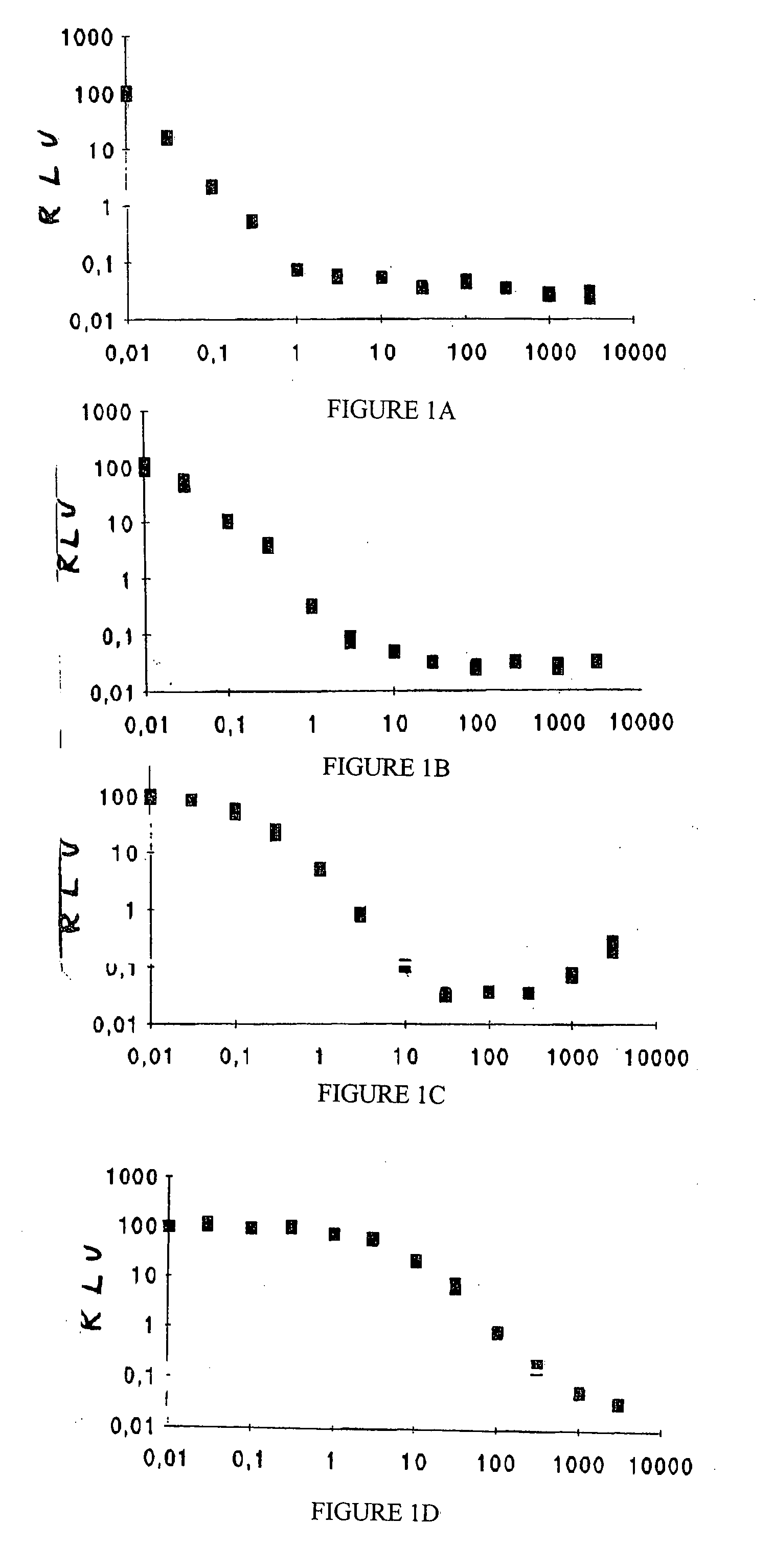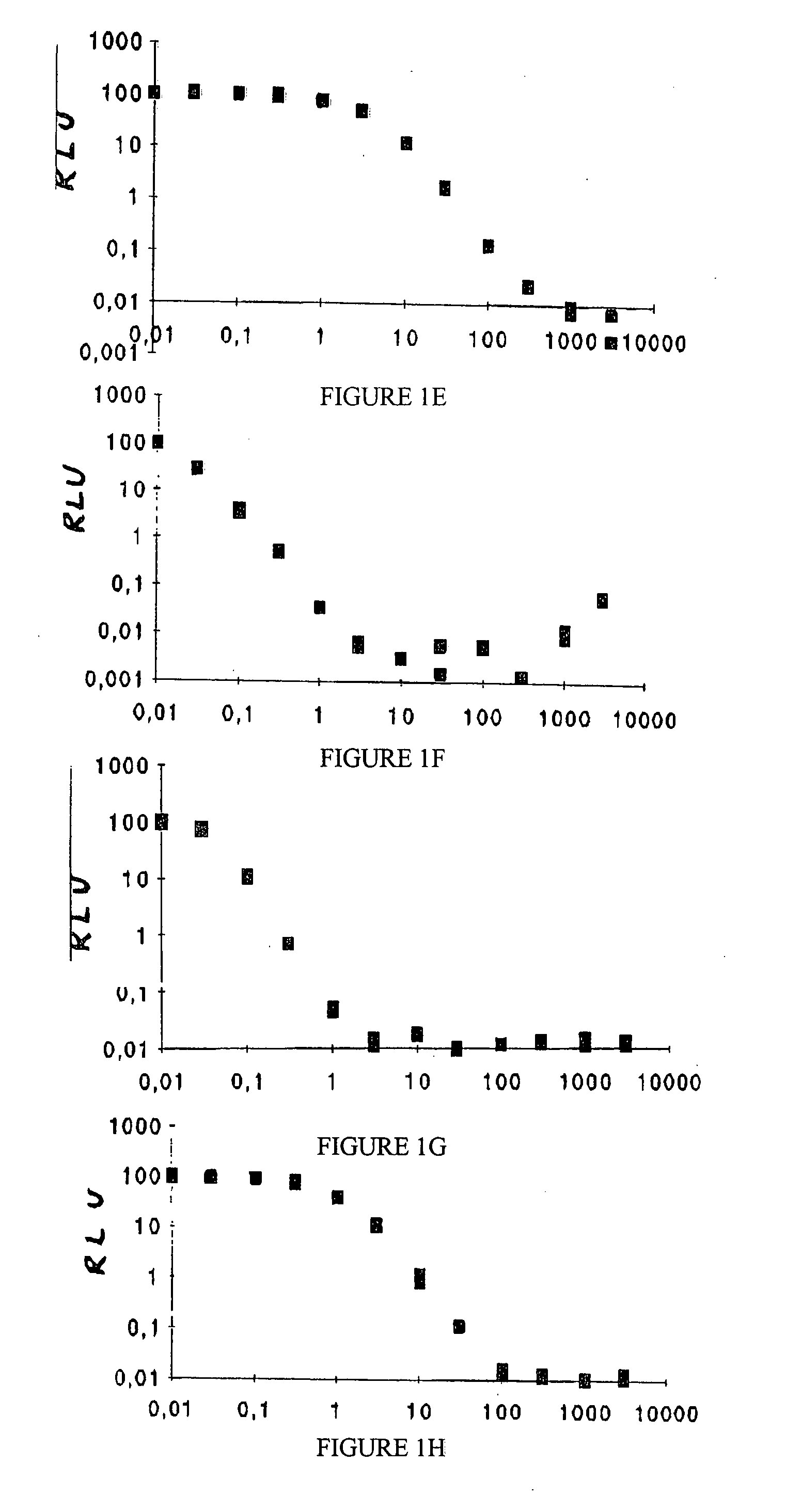Methods of regulating expression of genes or of gene products using substituted tetracycline compounds
- Summary
- Abstract
- Description
- Claims
- Application Information
AI Technical Summary
Benefits of technology
Problems solved by technology
Method used
Image
Examples
example 1
Induction of Luciferase Activity by Substituted Tetracycline Compounds
[0329]The ability of substituted tetracycline compounds to induce luciferase expression in HR5-C11 cells was examined. Cell line HR5-CL11 cells possess a luciferase gene and the rtTA gene, but not the tTA gene. HR5-C11 cells were plated at a density of about 3×104 cells / 35 mm dish (about 80% confluency). After full attachment of the cells, the tetracycline derivatives were administered to the cells at concentrations of 0, 30 through 3000 ng / mL. The luciferase activity was measured after three days incubation.
[0330]It was found that all of the tetracycline compounds increased luc activity. It was found that 9-t-butyl doxycycline resulted in the highest increase in luc expression, followed by pentacycline, 9-1′methylcyclopentyl doxycycline, 5-esters of doxcycline, 7,9-disubstituted doxcyclines, and 9-amino substituted doxycycline. The dose response curves are shown in FIGS. 1A-1H (Doxycycline (FIG. 1A); 5-cyclobutan...
example 2
rtTA-Mediated Gene Activation Using Substituted Tetracycline Compounds
[0331]Two luciferase positive cell lines 34R and MT2 produced new transactivators rtTA2-34R and rtTA2-MT2 respectively. These mutants are characterized by a very low level of residual DNA-binding in the presence of tetracycline compounds. With the rtTA2-MT2 system, 9-t-butyl doxycycline increased RtTA-mediated gene activation by 100 fold. 9-t-butyl doxycycline activated the system at concentrations between 30 and 100 ng / mL. It was found that 9-t-butyl doxycycline induced all rtTA's at a 10 fold lower concentration than doxycycline in vitro. Full induction of the system occurred at a concentration of 10 ng / mL of 9-t-butyl doxycycline. It was also found that 5-phenylcarbamate doxcycline is also two fold better activator of rtTA2s-M2 than doxycycline.
[0332]FIGS. 2A-2D show a comparison of doxycycline and 9-t-butyl doxcycline in 34R and MT2 rtTA mutants. FIGS. 2A and 2B show the effect of doxycyline on 34R and MT2 mut...
example 3
Dose Response Studies using X1 / 5 Cells and Substituted Tetracycline Compounds
[0333]The ability of substituted tetracycline compounds on tTA and rtTA transactivation using dose-response analysis with X1 / 5 cells were studied. Cell line X1 / 5 cells possess chromosomally integrated copies of the tTA gene and a luciferase gene controlled by a tetracycline-inducible promoter. After full attachment of the cells, the tetracycline derivatives were administered to the cells at concentrations of 0, 30 through 3000 ng / mL. The luciferase activity was measured after three days incubation.
[0334]It was found that as the concentration of doxycycline was increased, the switch turned off the luc gene. All the tested tetracycline compounds decreased the luciferase activity. 9-t-butyl doxycycline showed efficacy as measured by luc expression at the lowest concentrations, followed by pentacycline, 9-1′methylcyclopentyl doxycycline, doxycycline, 5-butanoate doxcycline, 5-cyclohexanoate doxycycline, 5,9-dis...
PUM
 Login to View More
Login to View More Abstract
Description
Claims
Application Information
 Login to View More
Login to View More - Generate Ideas
- Intellectual Property
- Life Sciences
- Materials
- Tech Scout
- Unparalleled Data Quality
- Higher Quality Content
- 60% Fewer Hallucinations
Browse by: Latest US Patents, China's latest patents, Technical Efficacy Thesaurus, Application Domain, Technology Topic, Popular Technical Reports.
© 2025 PatSnap. All rights reserved.Legal|Privacy policy|Modern Slavery Act Transparency Statement|Sitemap|About US| Contact US: help@patsnap.com



